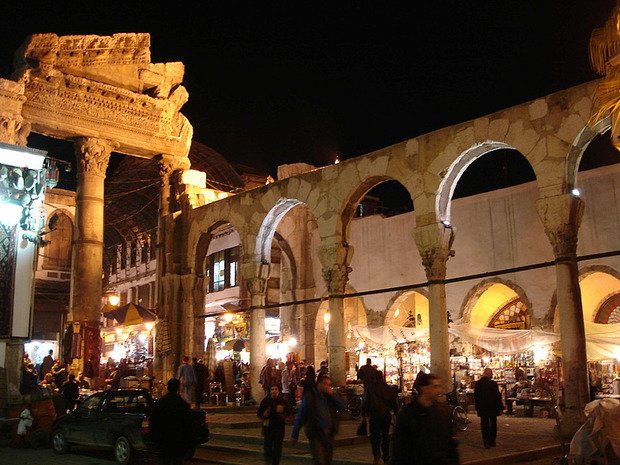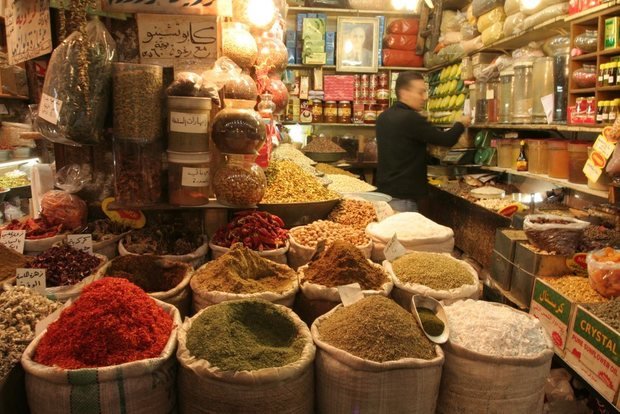Cheap and nasty: prices, salaries and devaluation of local currency in Syria
Journalist from the Near East Anhar Kochneva about the level of life in modern-day Damascus
British experts have just recently published a ranking of 130 world capitals according to their cost of living. The Syrian capital Damascus turned out at the bottom of the list. Journalist from the Near East, columnist of Realnoe Vremya Anhar Kochneva found out how accurate this estimate was and how prices and the citizens' salaries had changed in the country in wartime.
The cheapest capital
According to the research published by The Economist Intelligence Unit, Damascus has been recognised the cheapest world capital to live. The city is a bit 'ahead'´´ of the Venezuelan capital Caracas in this ranking. A repeated fall in prices for plenty of commodities and services became a result of the civil war in Syria that has been lasting for the eighth year already (the official date of the beginning of the opposition is 15 March 2011).
The ranking considered prices for 160 commodities and services in 130 countries of the world. Singapore, Paris and Hong Kong were the first among the most expensive cities. New York was on the sixth line. Life in Osaka and Seoul was also recognised expensive. Life in a number of cities in Australia and New Zealand has cheapened because of the devaluation of local currencies.
As for Syria, the national currency – Syrian lira – has fallen more than 10 times against the US dollar over the years of the conflict. Previously, its rate fluctuated between 45 and 50 per dollar, today over 500 Syrian liras are offered for a buck. And, for instance, if an office worker's salary in a state institution totalled some $450 (about 21,000 liras a month) before the war, today, given that this salary hasn't been raised, the same employee would be receiving approximately $40. What should we say about those who were paid 15-18,000 liras a month?

But salaries in Syrian liras have risen in the last years – but this hasn't mitigated the hardships the population faced. A salary of $50-60 a month is considered today quite good, but this money isn't enough even for food in a family with several dependants. Apart from food, residents of Syria have to pay for clothes and manufactured goods, transport, gas, water, electricity.
For some reasons, many people today have to rent a flat (places completely unsuitable for living in often become such a ''flat''). Moreover, the deficit of rented flats is simply enormous. Due to the high demand and almost no supply (in addition, property owners require paying one year beforehand and then ''seek refuge'' in Europe often with the money they earned) many forced displaced citizens from other Syrian cities have to deny themselves purchase of basic goods and services.
When prices grow by 200%
Analysts stated as early as 2016 that consumption of goods and services in Syria fell twice compared to 2011 when the turbulence in the country only began. Moreover, the 2010 prices were chosen as a basis when Syrians spent about 70 liras per person. They started to pay 142 liras in 2016. But because of inflation what they could afford for 70 liras in 2010 cost 800… That's to say, the real consumption of goods and services has reduced more than 10 times, while costs in liras have only doubled.
For this reason prices in Syria for services provided to the population are forcedly cheapening. Not to shut down, most enterprises are adapting to the population's fallen purchasing power. It was what threw Damascus to the bottom of the above-mentioned ranking. However, amid the total deficit of money itself, even the reduction in prices in dollars doesn't make goods and services available for a wide circle of people. The majority has to economise on everything. And prices have begun to grow again in the last months (probably ''in expectation of'' peace and upcoming stabilisation).
The price issue has even been recently raised in the Syrian parliament. As it was indicated in the report discussed at a meeting, prices for many goods and services had risen by 30%, and prices for vegetables and fruits had gone up by 200%. Earlier, before the war, this kind of products was purchased in boxes. For instance, a kilogramme of tomatoes was just 20 cents, and a 10-kilogramme box was $10. Today many neither afford this kind of luxury nor purchase kilogrammes of vegetables: they are buying several pieces trying to make their salary go a long way for the biggest number of goods needed for life.

However, farmers can also be understood: they have to feed not only their families with the money they earn on sales of products but also buy and repair equipment, purchase fuel, water, fertilisers, seeds, etc. Parliamentarians decided to find out what's going on and study the population's existing complaints. They are planning to ''take measures'' in cases when prices are unreasonably raised.
How much?
So how are prices in Syria looking now? I will remind that a good salary is just about 30,000 liras.
- Gas (tank): before 135, now 2,700 liras. A huge deficit. Speculators' prices in Aleppo this winter reached 12,000 liras, then lorries with gas came to the city, and the price fell a bit.
- Public transport: before 5, now – 50-100 liras in the city.
- A set of coffee cups: before 130 liras for 12 items, now – 4,000 liras for 6 (the cheapest).
- Onion: before 25 liras, now – 475.
- Herbs: before 10 liras for 3 bunches, now – 100 for bunch.
- Tomatoes: before 10 liras, now – 475.
- Cucumbers are sold for 37 liras, beans for 1,800, aubergine for 475, and potatoes – 450. I don't remember pre-war prices anymore…
- Respondents found it difficult to name prices for fish and meat.